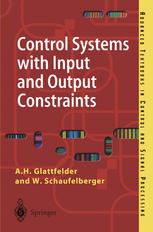

Most ebook files are in PDF format, so you can easily read them using various software such as Foxit Reader or directly on the Google Chrome browser.
Some ebook files are released by publishers in other formats such as .awz, .mobi, .epub, .fb2, etc. You may need to install specific software to read these formats on mobile/PC, such as Calibre.
Please read the tutorial at this link: https://ebookbell.com/faq
We offer FREE conversion to the popular formats you request; however, this may take some time. Therefore, right after payment, please email us, and we will try to provide the service as quickly as possible.
For some exceptional file formats or broken links (if any), please refrain from opening any disputes. Instead, email us first, and we will try to assist within a maximum of 6 hours.
EbookBell Team

0.0
0 reviewsA typical method of dealing with input and output constraints, especially for PID control, has been the empirical design and implementation of an intuitive solution to an individual plant and its constraints. Such ad hoc solutions perform surprisingly well but often remain in the form of isolated practical know-how without a more general scientific basis.
Control Systems with Input and Output Constraintsdevelops this empirical approach by demonstrating how particular answers to particular industrial design problems can be systematized to cope with a wide variety of simple and more complex situations. Each class of design problems is presented in five parts: industrial situation; problem statement; currently available control structures; benchmark simulation to obtain typical transient response and nonlinear stability analysis to relate structure to response. Links to optimal control and model predictive control are also explored. These steps help the reader to learn how to choose or adapt a control architecture and design or analyse it on a systematic basis.
Features:
associated website contains many ready-made examples and case studies using Matlab®/Simulink® to which extensive reference is made throughout the text facilitating understanding and saving time;
exercises interspersed throughout each chapter that allow the student to confirm progress as he/she proceeds;
logical five-step design procedure for each problem class moving from a particular industrial example to the informed choice of generic controller and the preparation of closed loop analysis.
Control Systems with Input and Output Constraints will be of great benefit to advanced students of control looking to pursue a career in process and/or plant control or in applications-oriented research. The practical basis of the presentation, the systematic design procedure, the restraint on mathematical formalism and emphasis on implementability will also appeal to industrial control engineers.